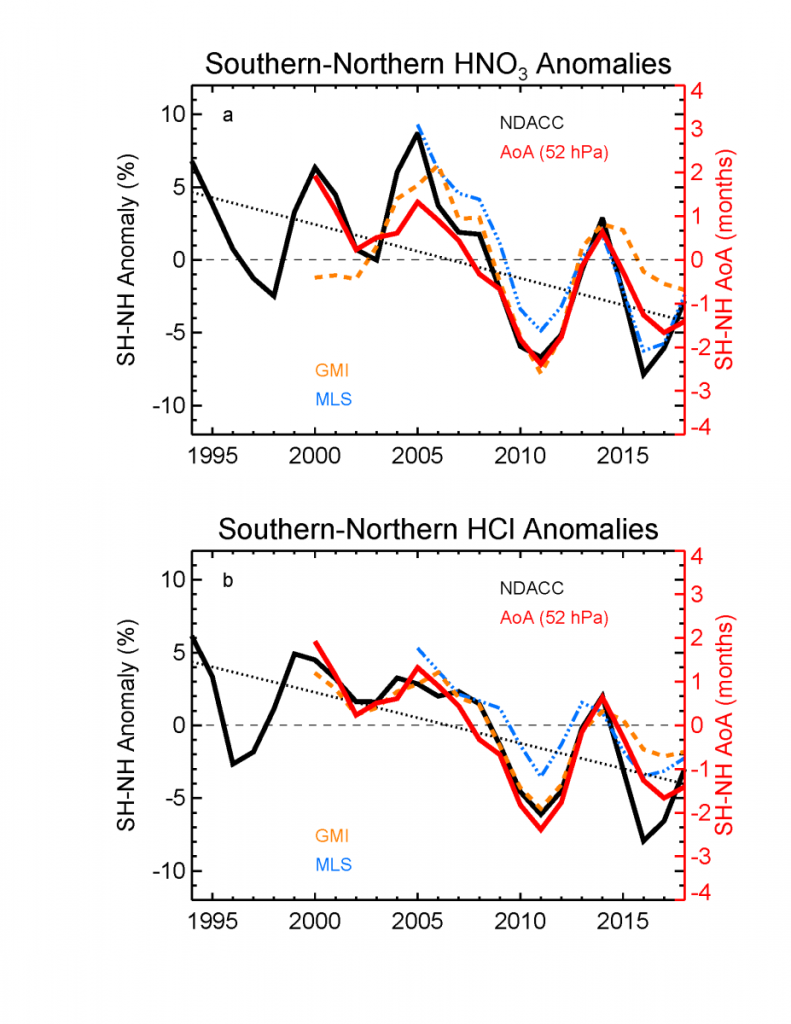Total columns of the trace gases nitric acid (HNO3) and hydrogen chloride (HCl) are sensitive to variations in the lower stratospheric age of air (AoA), a quantity that describes transport timescales in the stratosphere. We analyzed HNO3 and HCl columns from 9 NDACC FTIR sites spanning 77oS to 79oN and detected changes in the extratropical stratospheric transport circulation from 1994 to 2018. These analyses combined with AoA from a simulation using the MERRA2 reanalysis show that the southern hemisphere (SH) lower stratosphere has become 1 month/decade younger relative to the northern hemisphere, largely driven by the SH transport circulation. This result stands in contrast to several model studies that predict that Antarctic ozone hole recovery in this century will increase the SH age of air relative to the NH.
The analyses also revealed multi-year anomalies with a 5-7 yr period driven by interactions between the Brewer-Dobson circulation annual cycle and the Quasi Biennial Oscillation (QBO) in tropical winds. This previously unrecognized, low frequency variability is much larger than hemispheric transport trends and is likely to cause bias in trends calculated using data records shorter than about 2 decades. Attributing and quantifying changes in the transport circulation matter to our ability to model how our protective O3 layer will evolve in the future.
Strahan, S. E., Smale, D., Douglass, A.R., Blumenstock, T., Hannigan, J. W., Hase, F., et al. (2020). Observed hemispheric asymmetry in stratospheric transport trends from 1994 to 2018. Geophysical Research Letters, 47, e2020GL088567. https://doi.org/10.1029/2020GL088567

NDACC (black), MLS (blue), and GMI chemistry transport model (orange) interhemispheric difference (Southern Hemisphere − Northern Hemisphere) for (a) HNO3 and (b) HCl anomaly time series. The interhemispheric (IH) difference of MERRA2 age of air at 52 hPa (red) is plotted in each panel (see the right axis). The dashed line in each panel shows the linear trend for the NDACC anomalies, which are nearly identical. Because the IH difference in MERRA2 age of air (AoA) at 52 hPa is highly correlated with the observed anomalies (0.90), it is used to convert the trace gas anomaly trends into an AoA trend. The HNO3 and HCl anomalies give age trends of -0.87 (0.58) and -1.03 (0.64) month/decade, respectively (two standard deviations in parentheses).
By Susan Strahan (NASA Goddard), Dan Smale (NIWA), Anne Douglass (NASA Goddard), and a cast of dozens from the NDACC FTIR Working Group